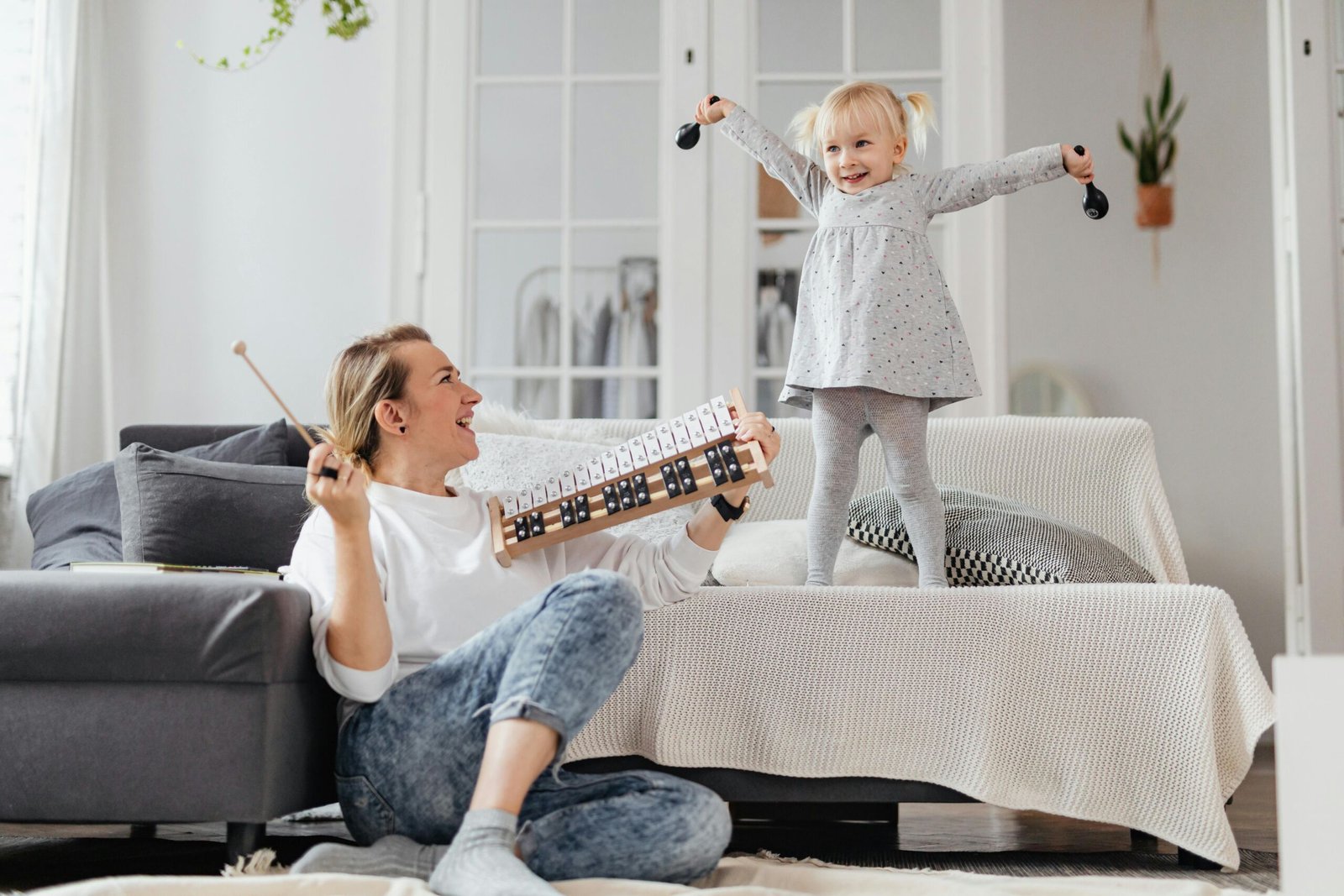More than just cute dance moves
If you’ve ever played a song and watched your toddler start bouncing, clapping, or even wiggling to the beat, you’ve seen rhythm at work. Music and movement aren’t just adorable moments they’re powerful tools for development. From language growth to emotional expression, rhythm helps children build essential skills while having fun.
In South Florida, where cultural music and dance are part of everyday life, families have a rich environment to nurture this growth.
Why music matters
1. Language & brain development
Singing nursery rhymes introduces rhythm, rhyme, and repetition building blocks of language. Babies who hear music often show stronger memory and listening skills.
2. Motor skills in motion
Clapping games, stomping to beats, or playing with small instruments improves coordination, balance, and fine motor strength.
3. Emotional expression
Music gives children an outlet to express feelings they can’t yet put into words. Fast beats energize; soft melodies soothe.
4. Social bonding
Singing together or joining a mommy-and-me class fosters connection, turn-taking, and group interaction.
Easy ways to bring rhythm into daily life
- Morning playlists: Start the day with upbeat tunes to set a positive mood.
- Dance breaks: Turn chores into mini dance parties great for parent stress relief too!
- Instrument basket: Fill with shakers, tambourines, or homemade instruments (rice in a sealed bottle works wonders).
- Local classes: South Florida offers bilingual music programs, baby yoga with rhythm, and cultural drumming circles perfect for toddlers.




2 Comments
Mila
My son Loooooooves music and we play it for him and sing and dance now its soooo cute to see him doing it!!
Diana
With every beat and every rhyme, music helps young minds to climb ⛰️